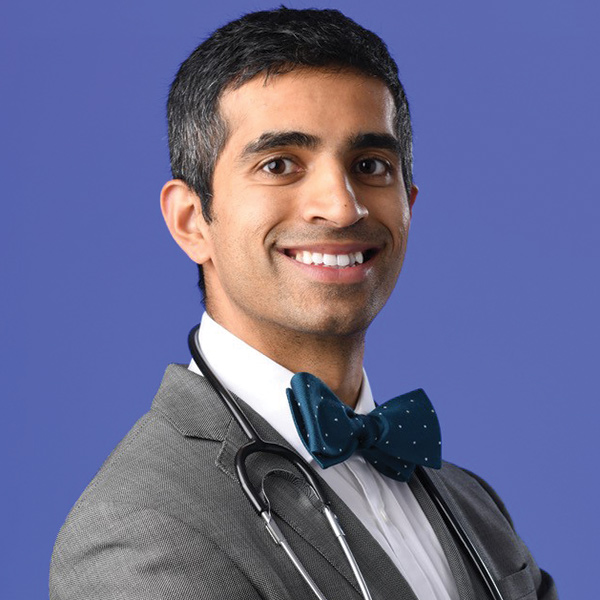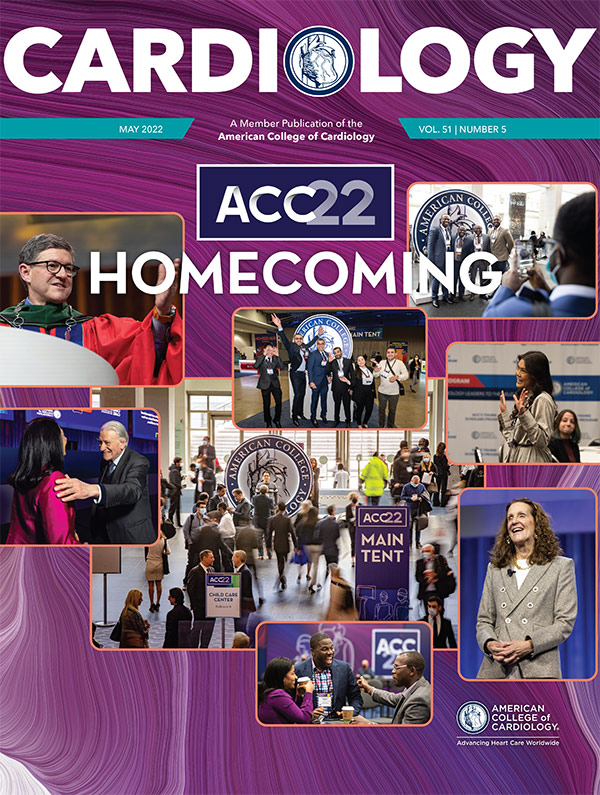Cutting-Edge Structural Interventions | Building a Structural Program: Creating an Effective Referral Network

In this series, we have laid the foundation for a successful structural heart program. Homework has been done, the care team assembled, and education provided to the sonography staff to ensure high-quality, high-yield echocardiograms that reflect the latest guidelines for imaging patients with valvular heart disease. Finally, in this fourth and final article, it is time to talk about building and maintaining a referral network.
When designing the structural heart program at my center, I relied on my prior experience as a referring physician and the updates I appreciated about my patients. Thus, communication with referring physicians before and after the procedure at our center is of paramount importance. It's baked into our process.
From the first day of my residency training, I learned to rely on referrals to obtain advice and expertise from colleagues with subspecialty training. As a physician striving to ensure my patients receive the best, most evidence-based care, whether a procedure or a new medication regimen, a referral to a specialty-trained physician is often needed.
However, with most hospitals equipped with electronic health record (EHR) systems, many specialty physicians no longer take the time to personally communicate with the referring physician. While knowing my patient was in good hands, I was invested in their well-being and I was curious about the plan of care and course of action. More importantly, when the patient returned to my office, I wanted to already know what happened, especially when I'd recommended a procedure.
Now that I am the specialty physician running a specialty program, I worked with my team to devise a process where we provided sufficient preprocedural and postprocedural communication. There are two great resources (often underutilized) specialists should leverage to maintain timely, excellent communication with providers: secure internal text messaging services and the house supervisor office or transfer center.
In my hospital system, we use a secure text messaging service called Doc Halo. Many hospitals use a similar product, which allows providers within the system to communicate with each other in a HIPAA-protected manner via text. This is a quick and efficient way to communicate immediately after the procedure. However, many providers who refer patients don't use this service or are outside our hospital system.
For referral physicians not on this messaging service, we work with our team of nurses and staff in the Transfer Center. Their primary role is communicating with referring physicians for inpatient transfer or specialized outpatient care and they are well connected within the referring community. They guide us to the best channel of communication for the physicians, clinics and local hospitals we need to reach, streamlining communication and saving time for my staff. Most hospitals have a similar system and I strongly advocate utilizing this service liberally.
Preprocedural Communication
ACC's Transcatheter Valve Certification
Partner with ACC's Accreditation Services to earn Transcatheter Valve Certification for your structural heart program. Certification focuses on the essential quality components related to TAVR and now includes requirements for mitral valve transcatheter edge-to-edge repair (TEER) procedures.

After seeing patients in clinic and creating the care plan, I forward my notes in our EHR system (Epic) to the referring provider. Epic has a "Communications" tab that allows providers to create a referral letter template that will automatically attach to the encounter note I send to the provider. In addition, if I do not know the referring provider or if the patient is being referred from a new referral source, I call the provider immediately after meeting with the patient to share the plan of care. This is because there are shortcomings with the digital communication, including the lack of two-way communication and knowing whether the letter was delivered as intended, say if the provider is outside our health care system or we have an incorrect fax number.
When needed, the Transfer Center will set up the call for me. I'm always ready with the patient's information to efficiently convey the information and discuss the plan of care and my rationale, after thanking them for their confidence and trust to care for the patient. Importantly, I exchange mobile phone numbers and I encourage them to call me with any questions, even if they are not related to structural cardiology. And I do get questions, on anything from use of statins to coronary CTA. I'm happy to field these questions, because it helps referring providers get to know me and my practice. Finally, I offer educational opportunities for the referring provider and her office staff. (Often our structural heart industry partners are happy to provide in-service training, with or without me, at the provider's office, offering another touch point). This call rarely takes more than five minutes, but even within a busy clinic day, it provides much value.
Postprocedural Communication
One of my mentors at the University of Washington Medical Center left me with some powerful parting advice. Gabriel S. Aldea, MD, the cardiothoracic surgeon I scrubbed alongside for the majority of my structural year there told me, "Sandeep, when you're done with the procedure be sure to speak to the family, call the referring physician, and then write your note, in that order."
It always struck me as odd that he advocated writing the note after speaking with the referring physician. As I continue to gain more experience, though, I realize how sage and timeless this advice has been. By calling the referring provider first, it forces me to remember to do what I always wanted and valued: keeping them in the loop!
I leverage my referral network through the quick cell phone call to my referring providers. If they don't pick up, I leave a voice mail or send a quick text with a collage of images from the patient's case. Within the next 24 hours, I send a letter created through our EHR that explains in more detail what happened, including color images from the case and more detailed follow-up instructions. My valve clinic coordinator and I both hand sign the letter and mail it (yes, via USPS) to the referring provider's office, along with some structural heart procedure brochures geared to referring providers. Most industry partners provide an unlimited supply of these free brochures. We use these to keep our referring providers up to date on the latest technologies available to their patients.
Wrapping it Up
Since starting at King's Daughters Medical Center (KDMC) nearly three years ago, I've been on a whirlwind journey. I'm very proud of how our structural program has evolved – culminating in the crowning achievement of gaining ACC Accreditation Services' Transcatheter Valve Certification in March 2022.
In hindsight, there are many things I would have approached differently. However, these insights have provided the impetus for putting my thoughts on paper so others could benefit and build their programs with more aplomb.
Some of the benefits we've experienced employing the steps outlined here and from the three previous articles in this series include:
- Team unity and cohesion have improved. The ACC is focused on building the cardiovascular care team and structural heart programs should be a model for this. Structural procedures require several different types of specialty physicians and many other types of staff members to work together to get each patient to the procedure table. It is imperative that physicians and all team members work together to streamline the process and create a seamless method to ensure success.
- Referral practices have changed. The strength of our multidisciplinary structural team is well recognized. Providers are now reaching out to team members for consultations for patients earlier in their disease course. This allows us to positively impact the lives of patients in our community earlier and more often. More than 50% of patients with a diagnosis of severe aortic stenosis and at least a class IIa guideline indication for aortic valve replacement are never referred for intervention, according to a paper published recently in JACC.1 Although I don't have figures for KDMC, I know we're chipping away at that percentage because of our excellent outcomes and constant communication with our referring providers. This keeps aortic valve replacement at top of mind for referring providers who previously may not have felt empowered to make the referral.
- Hospital administration buy-in is key. By including the hospital administration in the decision-making process, they are partners at the table with the structural heart team. This allows us to be nimble and evaluate the latest technologies so we can stay true to our mission statement of offering our patients world-class care.
- Patient satisfaction has improved. We focus on providing the best patient experience and consistently work to make things as convenient and easy for patients as possible. Many of our referrals are generated by word of mouth from our patients who spread the word about their experience to members of the community.
As a structural cardiologist, it's hard to avoid standing in the middle of the intersection of clinical care, physician leadership and hospital administration. Physicians must own this intersection to do a good job. There is much to learn. My personal goal is to assist other physicians in their journey to help more patients and grow the sustainable health care systems of tomorrow.
These systems face mounting pressures as our health care system makes the monumental shift from fee-for-service to value and quality-based systems. I've decided to pursue an MBA degree and soon begin this journey in the two-year MBA program at Wharton. I hope to use this knowledge to one day lead a health care system. Providers do a great job taking care of patients and we want to make their job as easy as possible as we work towards the Quintuple Aim.2

This article was authored by Sandeep Krishnan, MD, RPVI, FACC, a structural and interventional cardiologist and director of Structural Heart Disease at the King's Daughters Medical Center in Ashland, KY.
References
- Li SX, Patel NK, Flannery LD, et al. Trends in utilization of aortic valve replacement for severe aortic stenosis. J Am Coll Cardiol 2022;79:864-77.
- Itchhaporia D. The evolution of the quintuple aim: Health equity, health outcomes, and the economy. J Am Coll Cardiol 2021;78:2262-4.
Clinical Topics: Dyslipidemia, Valvular Heart Disease, Nonstatins, Novel Agents, Statins
Keywords: ACC Publications, Cardiology Magazine, Hydroxymethylglutaryl-CoA Reductase Inhibitors, Patient Satisfaction, Internship and Residency, Aortic Valve, Cardiologists, Electronic Health Records, Follow-Up Studies, Goals, Health Insurance Portability and Accountability Act, Hospital Administration, Inpatients, Leadership, Outpatients, Pamphlets, Postal Service, Telefacsimile, Text Messaging, Touch, Referral and Consultation, Communication, Heart Valve Diseases, Evidence-Based Medicine, Patient Outcome Assessment, Aortic Valve Stenosis, Certification, Cardiology, Patient Care Team, Hospitals, Surgeons
< Back to Listings

